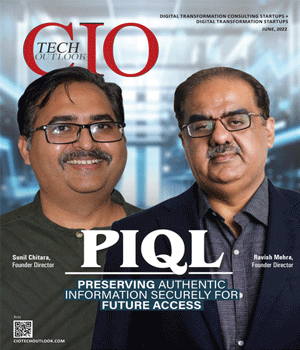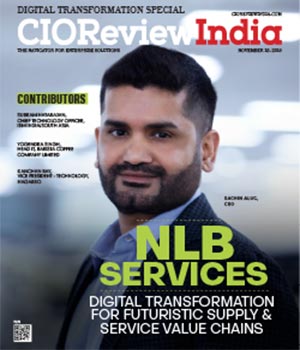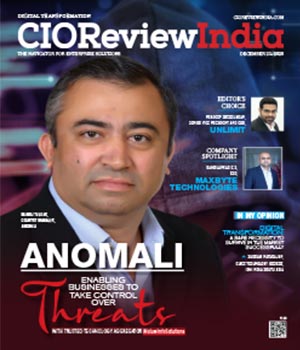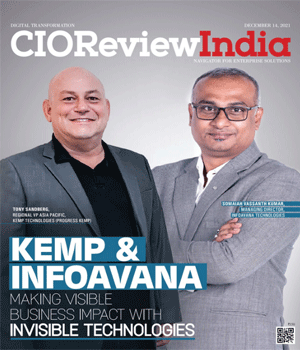
How the pandemic situation is putting the CIOs back in the boardroom
By Santosh Subramanian,Director-Cloud & Data Governance,Bombardier | Friday, 19 June 2020, 11:19 IST
 In majority of technology companies, unless Information Technology (Consulting or Services) is the primary revenue generating business, the IT organization is viewed as an expense, a cost to do business. Despite making large strides on the technology front, the IT budget hasn’t made an escape from being accounted as an SG&A expense, barring very few. Naturally, many organizations hadn’t taken the CIO role very seriously and a select few also moved the role under the Commercial Excellence (CMO) or the Finance Organization (CFO) depending on their nature of the business. In the recent past, there was enough directives from the top research partners about whether the CIO should even continue to exist as a separate role. Getting a seat at the boardroom seemed to be a far cry for CIOs unless there was a tech-savvy CEO at the helm of affairs.
In majority of technology companies, unless Information Technology (Consulting or Services) is the primary revenue generating business, the IT organization is viewed as an expense, a cost to do business. Despite making large strides on the technology front, the IT budget hasn’t made an escape from being accounted as an SG&A expense, barring very few. Naturally, many organizations hadn’t taken the CIO role very seriously and a select few also moved the role under the Commercial Excellence (CMO) or the Finance Organization (CFO) depending on their nature of the business. In the recent past, there was enough directives from the top research partners about whether the CIO should even continue to exist as a separate role. Getting a seat at the boardroom seemed to be a far cry for CIOs unless there was a tech-savvy CEO at the helm of affairs.
However, the pandemic situation has turned out to be an eye opener to many power houses on the importance of ‘enabling technology’. The same set of business leaders who frequently questioned the ‘value of IT’ have started to recognize how the silent workhorse continue to enable seamless business operations during the extended lockdown. I would argue that there is a new found respect for ‘enabling technology’ among the rung of senior executives even though it needed a pandemic to open that eyes.
Let’s look a few scenarios…
Remote Working (Telecommute):
When companies were hit by the mandatory lockdown across many countries they operated in, the decision to operate every possible function remotely happened very swiftly. What is visible to the regular employee is ‘connect from home’ instead of office and issue laptops to those who had desktops at work. However, think about the idea of a secured network originally designed for ~20-25% of the workforce now slammed with a whopping +80%? And that included highly sensitive, data intensive engineering design workloads. They made it possible from the short runway!
Digital Workplace:
Nothing beats meeting your teams face to face and conducting the daily huddle in person. The fringe benefits and productivity of meeting people face-to-face far outweighs any other methods of group collaboration. When you are working remotely, informal interactions become minimal and worse, every transaction takes a formal tone. What could have been a hall-way conversation now requires a scheduled meeting over Skype/Zoom/Phone. Advanced collaboration suits like Microsoft Teams (integrated audio, video, planner and workplace) that were already deployed, however struggled with pace of adoption by non IT teams – either due to the inertia or just plain ignorance. In many organizations, IT was successful in getting the executives adopt these new digital workplace tools themselves leading by example to the rest of the organization. Again, very high adoption rate over a very short time and now we have a surge of video calls running on the enterprise infrastructure backbone! They made it possible!
Remote Labs & VDI:
Even though VDI existed as a technology for many years now, the concerns around security and access control added with inertia among the user community was limiting the adoption of such solutions. Many businesses are now ready to move away from infrastructure-heavy operating model to leveraging VDI solutions to keep their businesses lean and operational. The possibilities of operating heavy machinery remotely with very limited hand- on- ground is helping manufacturing units to get back on schedules which otherwise would have been a complete halt resulting in major losses. They are making it possible!
Cloud Adoption:
Much has been spoken about Cloud and this is arguably the most abused word in the world of technology today. With aging infrastructure and assets nearing end-of-lease, IT organizations have been traditionally challenged with reducing CAPEX investments and its associated management costs. With aging software tools and platforms that weren’t upgraded for obvious reasons, this has now become an interesting problem to solve. During the pandemic, even the most traditional businesses are warming up to the idea that having a private server on an aging infrastructure on premise is not one of the best ideas to support business continuity. Personal preferences coated in intellectual property arguments is now melting away to make way for larger cloud adoption. Spending on cloud IT infrastructure in Q4 2019 grew by 14.5% YoY worldwide to $13.3B worldwide, according to an April 2020 report by International Data Corporation (IDC). They are making it possible!
While the strategy execution pivoted to address the new challenges at an unprecedented pace, we haven’t heard about any major cyber-attacks that has brought large organizations down. The CIO and the CISO organizations are closely joined at their hip to ensure that the solutions that are creating a paradigm shift to the whole industry are staying cyber safe and secure. They are making it possible!
According to the study by the IDG Network, 40% of the CIOs & IT Leaders say that their budgets are holding steady while initiatives are accelerating. There is a realization that Operational Efficiency (one of the core KPIs of a CIO) does not necessarily come from plainly digitizing existing processes and frameworks, but from re-architecting the overall machinery that keeps technology at its core during process design, and by driving higher levels of adoption.
To summarize, playing the role of a CIO now appears to be a valuable training ground along with the other assignments of CFO and CMO for future CEOs in the new world order. The equations are being rewritten while the world is re-anchoring itself to adjust to the new normal
(Views are personal)
CIO Viewpoint
The Constantly Evolving Technology Landscape in...
By Janifha Evangeline
Navigating the Digitalization of Mining Industry
By Janifha Evangeline
How To Achieve An Effective Digital Transformation
By Yogendra Singh, Head-IT/SAP, Barista Coffee Company Limited
CXO Insights
No-code platforms: Enterprise-wide Adoption...
By Rahul Murthi, Director at Acies
Unleashing the Potential of IT in Engineering...
By Gyan Pandey, Head - Digital/CDO, Voltas
Low Code and Artificial Intelligence - The...



.jpg)

.jpg)





